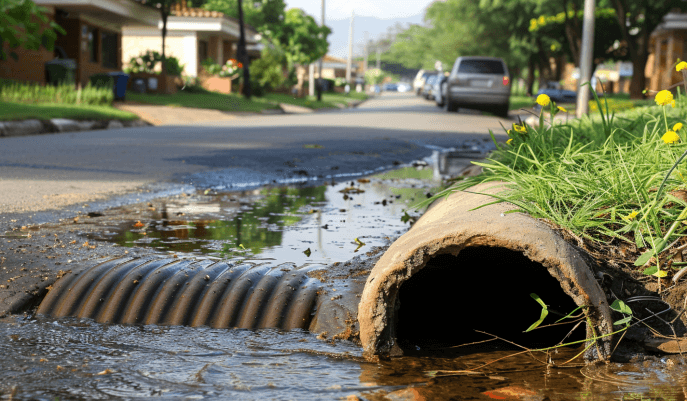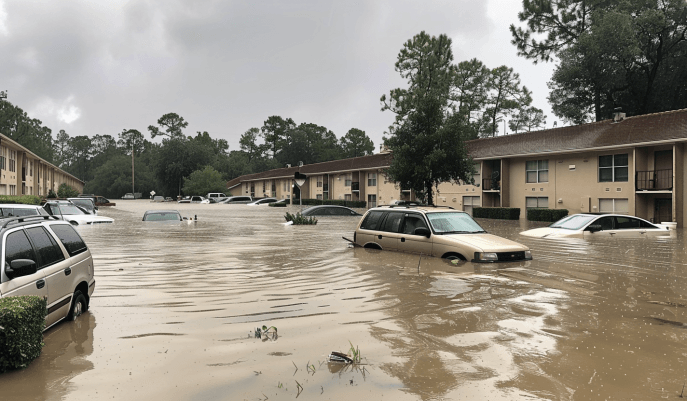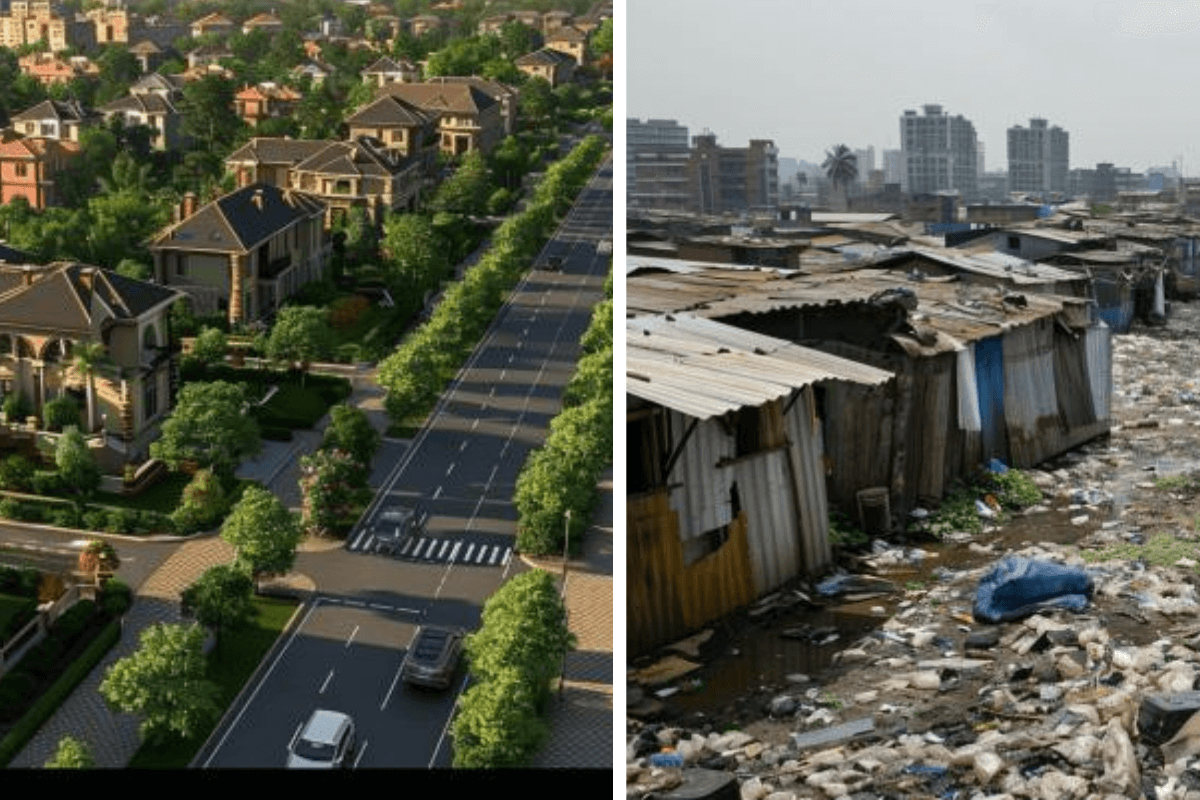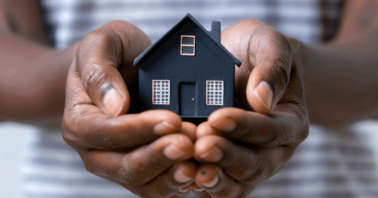- Gentrification is the process of socioeconomic transformation within an urban area and is driven by various factors.
- Gentrification presents several advantages and challenges.
- In the wake of Nairobi’s rapid urbanization and the development boom that has swept across the city in recent years, newly constructed areas have been particularly susceptible to the devastating impacts of flooding.
- Gentrification has undoubtedly spurred investment in neglected areas, leading to the rehabilitation of aging infrastructure, the construction of modern buildings, and the establishment of vibrant commercial districts.
Gentrification is the process of socioeconomic transformation within an urban area. It is typically characterized by the replacement of existing buildings, businesses and amenities with more modernized ones.
This leads to the displacement of lower-income residents and also changes in the neighborhood’s cultural and economic fabric. Gentrification is driven by various factors, including urban planning policies, real estate market dynamics, and shifts in consumer preferences. It can have varying impacts on housing affordability, social equity, and community cohesion within the affected area.
Table of Contents
Construction Industry’s Perspective: Opportunities and Challenges
From a construction industry perspective, gentrification presents several advantages. Firstly, it often fosters the development of urban infrastructure in previously underserved areas. This includes the introduction of permeable pavements, gardens, feeder roads, upgraded drainage systems, water systems, electricity grids and even security.
These enhancements are aimed at attracting affluent residents to newly revitalized neighbourhoods. Additionally, gentrification tends to stimulate economic growth and property values, providing local governments with increased tax revenues. The aesthetic and commercial improvements associated with gentrification can enhance the desirability of the area, attracting further investment.
While often heralded for its role in revitalizing neglected urban areas, gentrification also carries significant disadvantages. One notable drawback is the potential for it to prioritize aesthetic enhancements and commercial development over essential infrastructure upgrades.
As developers rush to capitalize on the trendiness of newly gentrified neighbourhoods, there’s a tendency to focus on surface-level improvements. Consequently, despite the shiny veneer of revitalization, these areas remain vulnerable to some problems like flooding, due to overlooked drainage systems.

Additionally, the process of gentrification often displaces long standing communities, further highlighting social inequalities. While gentrification promises urban renewal, its failure to address fundamental concerns- like drainage- underscores the importance of prioritizing holistic development strategies.
The Nairobi Experience
In the wake of Nairobi’s rapid urbanization and the development boom that has swept across the city in recent years, newly constructed areas have been particularly susceptible to the devastating impacts of flooding. Despite modern engineering techniques and urban planning efforts, the unchecked expansion of infrastructure often overlooks crucial considerations for drainage systems and flood management. Climate change has brought this out very well. Over the last month or so, Nairobi has experienced heavy rainfall leading to flooding in most Estates. The consequences are profound, ranging from irreversible property damage to disruptions in essential services, and the greatest loss of all being the loss of life. This has highlighted the urgent need for more comprehensive urban planning strategies and the importance of sustainable development practices that prioritize resilience to natural hazards.

READ ALSO: The Shocking Reality of How Satellite Neighbourhoods Struggle for Basic Amenities
The Benefits and Challenges of Gentrification
My perspective on gentrification is multifaceted. On one hand, I recognize the potential benefits it brings to urban renewal, infrastructure improvement, and economic development. Gentrification has undoubtedly spurred investment in neglected areas, leading to the rehabilitation of aging infrastructure, the construction of modern buildings, and the establishment of vibrant commercial districts. These developments not only enhance the aesthetic appeal of the city but also contribute to its overall prosperity by attracting foreign investment, more residents, and tourists.
However, my experience in the industry has also revealed the darker side of gentrification. Particularly concerning,is its impact on marginalized communities and the environment. The process of gentrification often results in the displacement of long-standing residents, who are pushed out by rising property values and rents. This displacement forces lower-income households into overcrowded and underserved areas with inadequate infrastructure. The homes in the area become less affordable, consequently reducing economic diversity.
From an engineering standpoint, gentrification also poses potential challenges to sustainable development and resilience to natural hazards such as flooding. While new construction projects may boast state-of-the-art design features, such as drainage systems and green infrastructure, the swift rate of development can occasionally surpass the capability of local authorities to guarantee sufficient infrastructure provision. As a result, gentrified areas may remain vulnerable to misfortunes such as flooding, with outdated or insufficient drainage systems unable to cope with intense rainfall.
The gentrification of Nairobi is expected to have a significant impact on home ownership patterns in the city. With affluent residents and investors flocking to revitalized neighborhoods, property values are likely to skyrocket, placing home ownership increasingly out of reach for many lower-income households. This exacerbates existing challenges of housing affordability and leads to further polarization of those who can afford upscale housing in gentrified areas and those who are pushed to the margins of the city. This also limits options for aspiring homeowners leading to far-reaching implications for social equity and urban development.
READ ALSO: Addressing the Infrastructure Deficit: Strategies for Sustainable Development.
Conclusion
In my opinion, addressing these challenges requires a holistic approach that balances the economic benefits of gentrification and the need for social equity and environmental sustainability. This entails prioritizing affordable housing initiatives and community-driven development strategies.
Let us invest in resilient infrastructure that benefits all residents, not just the affluent few. As someone deeply committed to the responsible and ethical practice of construction, I believe that gentrification can and should be leveraged as a force for positive change. However, it should be approached with sensitivity, inclusivity, and a long-term vision for the well-being of the city and its inhabitants.
To gentrify or not to gentrify, That is the ultimate question.



